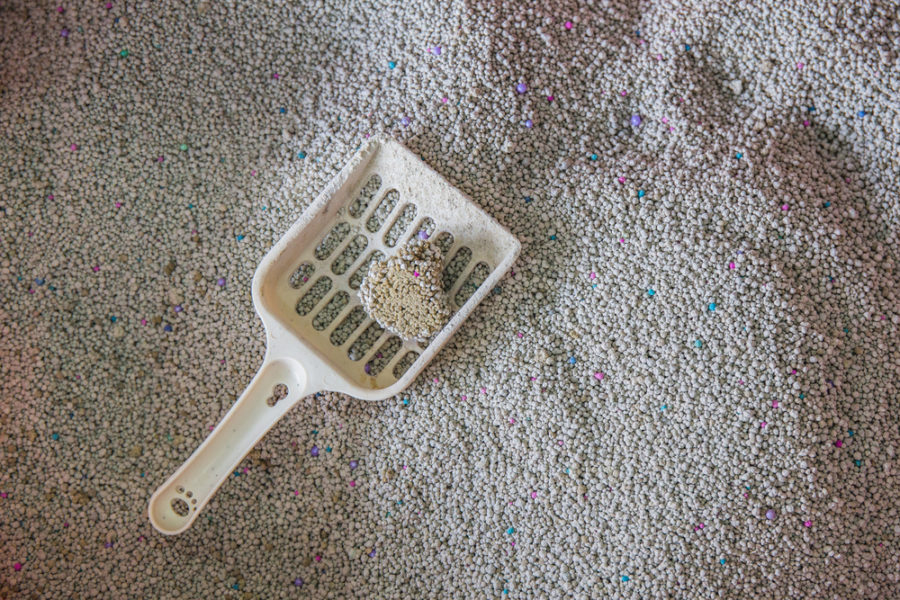A potentially hazardous material may be lurking in a quiet corner of your home. It is the hidden silica found in everyday, clay-based cat litter.
Preliminary research conducted by world-renowned animal behaviorist Peter Borchelt, PhD, of Brooklyn, New York, reveals the first clinical evidence that implicates silica components in cat litter as a potential cause of feline lung and respiratory problems.
Borchelt joined forces with veterinarians and research experts from several university and animal hospitals to conduct a limited study on 12 cats: six with respiratory problems and six without.
“The lungs of cats with respiratory disease,” says Borchelt, “contained up to six times more silica particles than cats without respiratory disease. ”This suggests a link between the presence of silica particles and feline respiratory disease. Among the more common respiratory diseases diagnosed in cats are bronchial asthma, chronic bronchitis, bacterial pneumonia, noninfectious inflammatory pneumonia, and neoplastic diseases. These diseases have never been associated with clay-based litters, although Borchelt points out that dusty clay litters have been targeted before as possible causes of these respiratory problems.
Borchelt’s research used scanning electron microscopy and x-ray spectroscopy to analyze particles obtained from the cats. The samples were taken either by painless tracheal washings or bronchoalveolar lavage fluids
Borchelt himself says his research doesn’t prove a connection between clay litters and these diseases. At this point, he says, that’s going too far, at least without additional research. Veterinarian Dale Longtin, however, stresses the importance of the study.
“This research,” says Dale Longtin, DVM from Muscatine, Iowa, “is the first time someone has gone out and attempted to either develop that relationship or eliminate that relationship between clay litters and lung damage. You can see the cloud of dust when you pour a bag of clay-based litter into a litter box, and I think common sense prevails from human experience that breathing dust isn’t good for us. Even though this initial research is only on six cats…it’s pretty alarming. After all, the silica is in there. How’d it get there? What really worries me, though, is that if cats are getting this into their lungs, what are the cat owners subjecting themselves to when they handle and pour silica-based litters?”
Click here for a list of natural cat litters!
It has long been known that silica inhalation can cause such diseases as chronic bronchitis, fibrosis, emphysema, bronchopneumonia and pulmonary neoplasia. Exposure to silica has been implicated as a cause of lung cancer and other respiratory diseases in humans, rats, mice and hamsters. Silica has also been identified as a health hazard to individuals in occupations such as mining, stone cutting and quarrying.
The results of Borchelt’s study will have far-reaching consequences both for consumers and for the cat litter industry, and it looks like cats may stand to benefit healthwise. Meanwhile, the clay litter silica study advances into the next phase of research.







